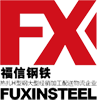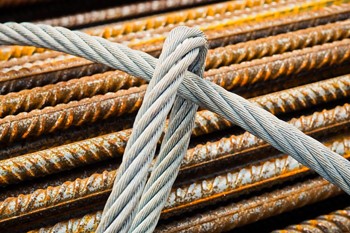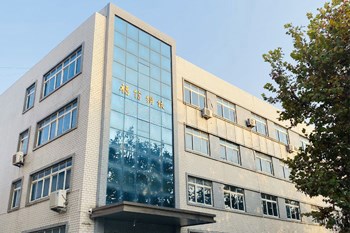
-
走进福信
- 新闻中心
新闻中心福信钢铁是热轧H型钢经销加工配送大型物流企业,是马钢H型钢山东地区代理商,是莱钢H型钢经销商,是日钢经销商,是鞍山宝得钢厂经销商,福信人经过二十年的艰苦奋斗和辛勤耕耘 ,用户遍布石化、化工、炼油、钢铁、船舶制造等领域。
- 产品展示
- 人力资源
- 在线留言
在线留言- 联系我们
- Home
Home- About Us
About UsFuxin Iron and Steel Co., Ltd. was established in 1993. The head office is located in the scenic coastal city of Yantai Development Zone.
- News
NewsAfter 20 years of hard work and hard work, Fuxin Steel has customers in petrochemical, chemical, oil refining, steel, shipbuilding and other fields.
- Products
ProductsThe company has become a qualified supplier in the e-commerce network of Sinopec and PetroChina, a quality credit AAA enterprise, and has passed the quality management system certification required by the ISO9000 standard.
- Jobs
- Messages
Messages- Contact us
Contact usInventory decline is difficult to solve the pressure, domestic steel prices are still in a "bear market"Release time:2013-11-25 21:47|Reading volume:Although domestic steel inventories have fallen for 17 consecutive weeks, the supply pressure on the steel market is still difficult to effectively alleviate. Since the rapid plunge of steel prices in August 2011, my country's domestic steel prices have entered a long “bear market”. Since the beginning of this year, the price curves of 8 domestic wire rods and rebars have shown a continuous downward trend. According to industry insiders, sluggish demand in downstream industries and overcapacity in the steel industry are the crux of the market downturn. It is expected that the steel market will continue to operate at the bottom in July.
The price of steel hardly improves
Although domestic steel prices picked up slightly in March and April this year, steel prices have fallen into a downturn again since May.
According to data from the China Iron and Steel Association, as of the third week of June, the comprehensive steel price index in the domestic market was 115.70 points, a drop of 4.75 points from the end of last year; the long product and plate price indices were 119.60 points and 113.58 points, respectively, compared with last year. At the end of the year, it fell by 6.89 points and 2.71 points. In fact, except for the steel price index in March and April this year, which exceeded the lowest point last year, the steel price index for the remaining months of this year was lower than last year's lowest level.
The low steel price and the decrease in downstream demand have caused many companies to face operational difficulties. "Now the price of steel structure is almost the lowest price, and the company basically has no orders." The person in charge of a steel structure enterprise in Anhui said bluntly. It is understood that many companies engaged in the steel structure business have been operating poorly recently, and the order volume of some companies has even dropped to 2/3 of the same period last year.
According to industry insiders, “due to the bad real estate market situation and the credit tightening policy that has lasted for more than a year, investors lack confidence in project investment, which has led to the overall downturn in the steel structure market.” More experts said, not only The steel structure market, the downstream shipbuilding industry, automobile industry, mechanical processing and other industries have reduced the demand for plates.
At present, the national steel stocks have fallen for 17 consecutive weeks. Despite this, the total steel stocks are still 1.11 million tons higher than the same period last year, and the total stocks of rebar and wire rods are 1.63 million tons higher than the same period last year. Industry insiders said that the decline in inventory has slowed down, coupled with the fact that crude steel production remains high, and market supply pressure continues to increase, making it difficult to significantly improve the oversupply of steel. In July, the steel market will still be in the process of bottoming out and seeking a breakthrough.
Ore prices have rebounded
Unlike steel prices that have been sluggish, iron ore prices have begun to rebound in recent weeks after falling in May. However, compared with the previous period, the current iron ore price has fallen from a high level.
According to the latest data from China Steel Association, from June 18 to June 22, China's iron ore price index was 462.81 points, an increase of 9.69 points from the previous month. The average price of domestic iron ore was 940.38 yuan/ton, an increase of 19.14 yuan per ton from the previous month; the average CIF price of imported iron ore was US$139.35/ton, an increase of US$2.95 per ton from the previous month, and the price in RMB was 1027.80 yuan/ton including tax. , An increase of 20.98 yuan per ton from the previous month.
Due to the downturn in the steel industry and the increase in iron ore output, miners have also become cautious in their judgment on the future price of iron ore. Recently, a person from the Australian mining giant Rio Tinto said that as new supplies enter the market, changes in iron ore prices will slow down in the future. Despite this, Rio Tinto has decided to invest US$3.7 billion in the expansion of iron ore projects in the Pilbara region in Western Australia and US$501 million in the development of infrastructure for the iron ore projects in Guinea.
According to industry insiders, due to domestic steel mills' strict control of raw material procurement costs and the decline in international commodity market prices, although iron ore prices have rebounded, they will remain in a weak consolidation in the future.
PreviousNext
- Add:90 Huangshan Road, Yantai Development Zone
- Tel:0535-6370829
- Fax:0535-6396529

Follow mobile station
COPYRIGHT 2020 Yantai Fuxin Steel Co., Ltd. All rights reserved - 新闻中心












